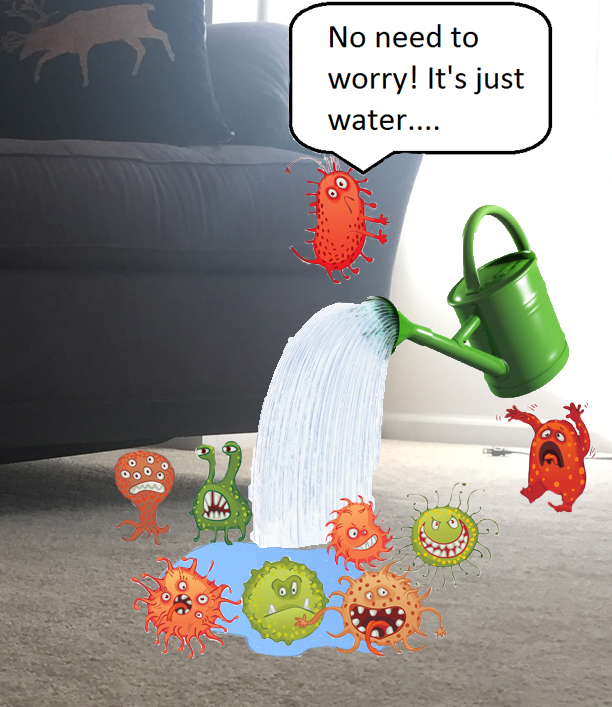Not everyone understands the consequences of water damage.
No need to worry, it’s just water.
Will it dry out by itself?
While this might seem hard to believe, it seems that people don’t think about the dual nature of water: water can kill as much as it can create.
Even the gentle spring rains can quickly become flash floods in the right circumstances. Within this duality we must consider bacteria and mold. Like any plant, if you water it, it will grow.
We think of dust as just dust. It’s ubiquitous to our homes and offices. In the air after we vacuum, on surfaces that we don’t touch too often. The fact is that much of this dust is composed of bacteria and fungi. If you are disciplined in cleaning and dusting within normally dry environments, the risk of these elements is low. However, when reservoirs, or contained areas within a larger space evade regular cleaning and moisture is introduced or invades, these normally benign materials become microbial and can become airborne.
The places to examine most closely for these hazards are bathrooms with little or no ventilation, basements, cabinets under sinks and places like air conditioning units or behind refrigerators where air condensers are used. The innate ability of these areas to become damper and damper without being noticed by inhabitants can be a major risk.
The natural drying process that occurs leaves most spaces safe for human habitation, but when moisture is forming and growing faster than this process, as in with chronically drippy pipes or sudden flood/burst pipe conditions, bacteria grows quickly. The countless different types of mold spores and bacteria can destroy belongings, damage indoor air quality and severely impact the overall health of people using the space.
When water damage is extreme, such as with burst sewage pipes, harmful disease-causing viruses and parasites can join the damaging conditions, making their way to the surfaces around us and our lungs.
More than 100 viruses come from human waste and end up in city treatment pipes and facilities and can become airborne without proper mitigation techniques. Everything from inflamed respiratory tracts to chest tightness, vomiting and other central nervous system effects can take place because of these cell wall harming endotoxins. Those most at risk from these scenarios are the elderly, very young and immunosuppressed.
Whether seen or unseen, the presence of microbial growth is often detected by the unmistakable “mildew” odor that we recognize. These odors come from volatile microbes and other gram negative bacteria that rapidly grow and metabolize.
The lesson is to always take water damage seriously. As it gives us life, so does it give the not-so-nice bacteria around us life, causing airborne pathogens of all types to be inhaled and touched by ourselves and our colleagues and families. When even the smallest leak happens in your dwelling or workplace, have it checked ASAP. In some cases, it truly will not just “dry by itself.”

